Hairline Lowering Surgery in United Arab Emirates
Search and Compare the Best Clinics and Doctors at the Lowest Prices for Hairline Lowering Surgery in United Arab Emirates
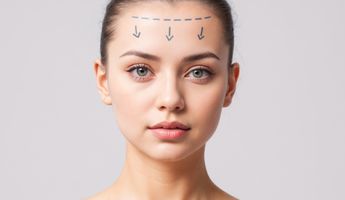
Find the best clinics for Hairline Lowering Surgery in United Arab Emirates
No clinics available
Egypt offers the best prices Worldwide
Price: $ 500

- Home
- United Arab Emirates
Compare Before & After Photos of _procedure_photos.phpHairline Lowering Surgery
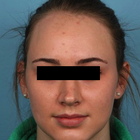
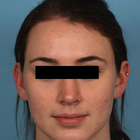
Front view
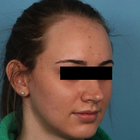
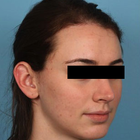
Half-side view

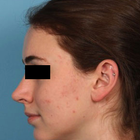
Full-side view

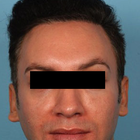
Front view
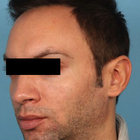
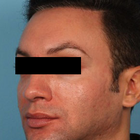
Half-side view


Full-side view
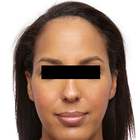

Front view
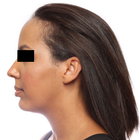

Full-side view
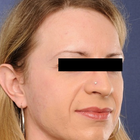
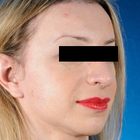
Half-side view
WHY US?
At Medijump, we're making medical easy. You can search, compare, discuss, and book your medical all in one place. We open the door to the best medical providers worldwide, saving you time and energy along the way, and it's all for FREE, no hidden fees, and no price markups guaranteed. So what are you waiting for?

Free

Best Price

Widest Selection

Risk-Free
What you need to know about Hairline Lowering Surgery in United Arab Emirates
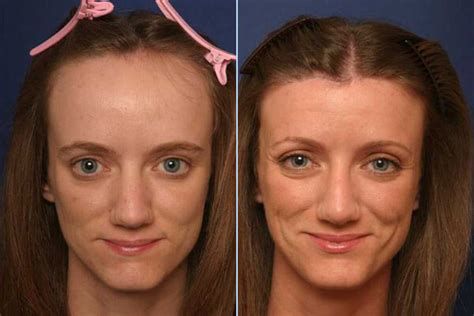
Also known as Forehead Reduction, Forehead Contouring or Scalp Advancement, Hairline Lowering Surgery allows patients to lower their frontal hairline, often lowering it by up to 2 inches. This procedure aims to reduce the distance between the hairline and the eyebrows, creating a more proportionate appearance. It is most commonly done on women with high hairlines, often the result of hair loss.
The procedure usually takes a couple of hours and is performed under general anesthetic. The new hairline is marked on the forehead, the surgeon will cut away this excess skin and the scalp is lowered to the new hairline. Incisions are strategically placed to minimize the visibility of the scar, making it virtually undetectable as it's covered by hair. It's common to combine hair lowering surgery with Facial Feminization Surgery (FFS). Contact a reputable clinic to ensure the best possible results.
What is the cost of Hairline Lowering Surgery in United Arab Emirates?
Before choosing a procedure, it is essential to understand the cost of a Hairline Lowering Surgery in United Arab Emirates. The cost might vary depending on a number of factors, including the complexity of the procedure, the surgeon's experience and reputation, and the facility. This approximate cost mostly covers the surgeon's fees, anaesthesia, required medical exams, and hospital or operation centre expenses. This is only a broad estimate, so when accounting for other charges, the exact prices might be higher. The ultimate cost may increase as a result of some factors, including consultation fees, outlays for post-operative care such medications, bandages, and follow-up consultations, as well as potential further surgeries to control complications or enhance outcomes.
It's important to keep in mind that Hairline Lowering Surgery is frequently regarded as a cosmetic surgery and may not be covered by conventional health insurance plans. It is best for the patient to speak with their insurance company before the procedure to understand the specific out-of-pocket costs they would have to pay. Some cosmetic surgery practises may provide financing options or payment plans to help patients manage the cost of the procedure.
What does a Hairline Lowering Surgery Procedure Involve?
Hairline lowering suregry is performed under local or general anesthesia. Before the operation begins, the surgeon draws an anticipated post-operative hairline. The surgery is performed according to this and an incision is made along the hairline. The excessive scalp is cut and removed and the rest is stretched to the new hairline. If this is not enough, tissue expanders are used to make it to the new hairline level. Sutures are used to fix the scalp to the bone and incisions are stitched with bandages being applied over the top.
The medical professional ensures that the incision marks are seamlessly concealed within the hairline, thereby reducing any visible traces of the procedure. Once the operation is concluded, the cut is stitched, and a gentle dressing is applied to shield the wound and diminish inflammation. It's important to understand that the intervention may lead to temporary loss of sensation or minor prickling around the area of incision, however, these symptoms tend to dissipate within several months.
How Long Should I Stay in United Arab Emirates for a Hairline Lowering Surgery Procedure?
Hairline lowering surgery is an outpatient procedure that takes around 1.5 to 2 hours to complete. After the effects of the sedation subside, you are allowed to leave. Still, you should aim to stay in United Arab Emirates for at least 6 days post-op. During this period, you will have a follow-up with the surgeon to check everything is healing as expected and the sutures are removed, usually after 5 to 6 days - this is when you're given the all-clear to travel home.
What's the Recovery Time for Hairline Lowering Surgery Procedures in United Arab Emirates?
It will take between 3 to 6 months to allow the regrowth of hair through the scar, which is important as it hides the scar. Recovery time varies from person to person and some people can get back to their normal routine even after 3 days. At least a week is usually required to get back to normal activities and you may find some swelling and bruising over your forehead in the early days. Pain is managed with painkillers and all symptoms subside after a couple of days. A numbing of the forehead is common and normal feeling usually returns after 3 to 5 days.
What sort of Aftercare is Required for Hairline Lowering Surgery Procedures in United Arab Emirates?
Aftercare following a Hairline Lowering Surgery is crucial to ensure a smooth recovery and minimization of potential complications. The following are some useful aftercare tips:
- Use icepacks in the initial days to help with inflammation and bruising. Ice is effective in reducing swelling immediately.
- Do not take anti-inflammatory medicines as they increase bleeding tendency.
- Continue taking painkillers prescribed by your doctor.
- Try not to look upwards and avoid frowning as this can be damaging to your stitches.
- Do not lift heavy objects.
- Keep your head a little higher whilst resting.
- Ensure that tight bandages have been applied over the wounds and replace regularly with fresh ones.
- Do not take a bath when the bandages are still intact as a wet bandage can be the cause of infection.
- Avoid strenuous activities such as the gym, running, swimming, etc. for at least 2 weeks after the surgery.
- Do not put hair bands or any other accessory on your head for some time.
- Do not drink or smoke as it will hinder the healing process.
- Ensure you have a diet rich in vitamin C as it makes the healing process faster.
What's the Success Rate of Hairline Lowering Surgery Procedures?
A Hairline Lowering Surgery frequently yields remarkable results, with a significant number of individuals expressing contentment with their post-procedure appearance. Nevertheless, outcomes may differ based on the medical institution or medical professional involved. With the possibility of the scar being visible with certain hairstyles, Hair Transplantation could be applied to further reduce the appearance of any scarring.
Notably, while Hairline Lowering Surgery tends to yield positive results for the majority, it might vary on an individual basis. Factors such as your unique hair growth pattern, scalp flexibility, and the overall state of your hair condition could all influence your final outcome. Therefore, maintaining ongoing communication with your medical professional and adhering to their recommendations both pre and post-treatment is crucial to optimising your results.
Are there Alternatives to Hairline Lowering Surgery Procedures in United Arab Emirates?
Surgery is not the only option. Consider these methods before opting for surgical treatment:
- Grafting hair (Hair Transplant): with this technique more hairs are grafted along your hairline instead of lowering it. This is also used for the thickening of your hair. A new layer of hair is grafted below your natural hairline. 1200 to 2400 hair strands are grafted. These hairs fall out after 3 weeks then regrow in 4 months. 10 months is required before you'll see the true longterm result. This is a non-surgical alternative to hairline lowering surgery and it is found to be very effective in reducing the size of your forehead.
- Hairstyling: You can hide a big forehead by styling your hair in such a manner. Of course, this is a non-surgical method. Choose those hairstyles which cover your forehead the most. Some people will use headscarves and hats to also hide their forehead.
What Should You Expect Before and After the Procedure?
A fundamental phase before proceeding with a Hairline Lowering Surgery in United Arab Emirates is the preliminary discussion with your medical expert. This interaction involves a comprehensive health evaluation, scrutiny of your medical background, and discussion of any medications you currently use by your expert. They will also perform an exhaustive examination of your scalp and hairline. This evaluation offers the medical professional an opportunity to decide if you're the perfect fit for the process. Moreover, they will deliberate on your anticipation and cosmetic objectives, ensuring they align with the realistic outcomes offered by Hairline Lowering Surgery.
Feeling slight discomfort, swelling, and bruising in the treated part is a normal sensation post a Hairline Lowering Surgery. It is vital to abide by the directives of your medical professional, which may involve keeping your cranium elevated and avoiding rigorous activities to manage these symptoms. For the initial few days succeeding the procedure, rest is essential, providing your body with time to recuperate. Your medical expert might recommend pain-relief therapy for discomfort management. Usually, stitches are taken out approximately one week after the surgery, and by this time, most people can get back to their work and routine activities. Regular follow-up sessions with your medical expert should be expected during the recovery span. These sessions offer your expert a chance to track your recovery progress, manage any prospective obstacles, and provide support during your healing period.
What are the Risks and Side Effects of Hairline Lowering Surgery in United Arab Emirates?
While side effects are usually minimal, they are important to think about. After the Hairline Lowering Surgery, you might feel some short-term side effects like swelling, pain, and bruising around the spot where you had the surgery. This is normal during healing and usually goes away in a few days. Numbness or tingling near the cut is also common after a Hairline Lowering Surgery. This happens because small nerves can be affected during the procedure. As your body recovers, these feelings should slowly lessen and finally go away.
Some people might notice hair loss, usually temporary, around the cut. This happens due to the stress on the hair roots during the procedure. However, this kind of hair loss usually doesn't last more than a few months, and new hair will start to grow. More serious risks include infection, heavy bleeding, or bad reactions to the anesthesia. While these problems are rare, they need immediate medical help. To reduce these risks, it's crucial to pick a good surgeon and follow their before and after care instructions.
Whilst the information presented here has been accurately sourced and verified by a medical professional for its accuracy, it is still advised to consult with your doctor before pursuing a medical treatment at one of the listed medical providers
No Time?
Tell us what you're looking for and we'll reachout to the top clinics all at once
Enquire Now

Popular Procedures in United Arab Emirates
Prices Start From $136

Prices Start From $4

Prices Start From $126

Recommended Medical Centers in United Arab Emirates for procedures similar to Hairline Lowering Surgery

- Interpreter services
- Translation service
- Religious facilities
- Medical records transfer
- Medical travel insurance
- Health insurance coordination
- TV in the room
- Safe in the room
- Phone in the room
- Private rooms for patients available

- Interpreter services
- Translation service
- Religious facilities
- Medical records transfer
- Medical travel insurance
- Health insurance coordination
- TV in the room
- Safe in the room
- Phone in the room
- Private rooms for patients available

- Interpreter services
- Translation service
- Religious facilities
- Medical records transfer
- Medical travel insurance
- Health insurance coordination
- TV in the room
- Safe in the room
- Phone in the room
- Private rooms for patients available

- Interpreter services
- Translation service
- Religious facilities
- Medical records transfer
- Medical travel insurance
- Health insurance coordination
- TV in the room
- Safe in the room
- Phone in the room
- Private rooms for patients available

- Interpreter services
- Translation service
- Religious facilities
- Medical records transfer
- Medical travel insurance
- Health insurance coordination
- TV in the room
- Safe in the room
- Phone in the room
- Private rooms for patients available

- Interpreter services
- Translation service
- Religious facilities
- Medical records transfer
- Medical travel insurance
- Health insurance coordination
- TV in the room
- Safe in the room
- Phone in the room
- Private rooms for patients available

- Interpreter services
- Translation service
- Religious facilities
- Medical records transfer
- Medical travel insurance
- Health insurance coordination
- TV in the room
- Safe in the room
- Phone in the room
- Private rooms for patients available

- Interpreter services
- Translation service
- Religious facilities
- Medical records transfer
- Medical travel insurance
- Health insurance coordination
- TV in the room
- Safe in the room
- Phone in the room
- Private rooms for patients available

- Interpreter services
- Translation service
- Religious facilities
- Medical records transfer
- Medical travel insurance
- Health insurance coordination
- TV in the room
- Safe in the room
- Phone in the room
- Private rooms for patients available

- Interpreter services
- Translation service
- Religious facilities
- Medical records transfer
- Medical travel insurance
- Health insurance coordination
- TV in the room
- Safe in the room
- Phone in the room
- Private rooms for patients available
Hairline Lowering Surgery in and around United Arab Emirates
About the United Arab Emirates
The United Arab Emirates consists of seven emirates and they are Dubai, Abu Dhabi, Sharjah, Ajman, Ras al-Khaimah, Fujairah, and Umm al-Quwain. Abu Dhabi is the richest Emirates due to its oil fields. The UAE population is close to 10 million people.
Shopping is often considered to be the most popular tourist activity in the UAE, certainly for Dubai and Abu Dhabi. there is no denying that going to a mall or souk is a great way of soaking up the local culture, Low prices are often due to the low rate of 5% VAT. There are various shopping festivals throughout the year, especially in Dubai and Abu Dhabi.
The UAE has become a worldwide destination for medical tourists due to its wide range of state-of-the-art technology, affordable treatments, and highly specialized doctors. UAE has already witnessed a sizeable increase in medical tourists who are drawn to the country for treatments ranging from major surgeries to rehabilitation and cosmetic corrections.
The country has been focusing on increasing its healthcare infrastructure in terms of quality as well as quantity, in line with its global aspirations for medical tourism According to Medical Tourism statistics, UAE ranks in 5th place, The country has close to 40 hospitals when compared to only having 7 in 1970. The Government has mandated all companies to provide all their employees with health insurance
In the United Arab Emirates medical education and research foundations such as Al Jalila Foundation, Centre of Arab Genomic Studies, Red Crescent Society of UAE, and Sahi School Health Programme aim to provide the best hospitals and create the best-skilled professionals in the country. With high-quality hospitals such as American Hospital Dubai, Lifeline Hospital, Emirates Hospital, Rashid Hospital, and others, Dubai caters to ailments such as Ophthalmology, Orthopaedic, Rheumatology, Dermatology, Cosmetic and Plastic surgery.
Here are three good reasons why the UAE is the best place to go for medical tourism.
-
The UAE has over 200 JCI-Accredited Hospitals and Clinics.
-
The treatment modules, both surgical and non-surgical are cutting edge and certified.
-
UAE has the best post-operative care in this part of the world.
Popular parts of the UAE
This nation is a fascinating fusion of the contemporary world and deeply rooted Islamic customs, creating a unique cultural tapestry that is a delight to explore. There are numerous notable structures that dot the landscape, beckoning those with an adventurous spirit to embark on unforgettable tours and soak in the rich architectural heritage of the region. The presence of botanical gardens enhances the country's natural beauty, providing tranquil spots amidst the rush of city life where one can take a leisurely stroll, enjoy a picnic, or simply sit and watch the world go by.
For those seeking an adrenaline rush, the country does not disappoint with its array of world-class amusement parks. These colorful wonderlands offer high-octane roller coasters, immersive virtual reality games, and lively entertainment shows which are bound to delight children and adults alike. In contrast, the country's stunning mosques stand as serene symbols of its deep religious underpinnings; their intricate design, ornate calligraphy, and contemplative atmosphere invite visitors to marvel at their grandeur and gain a deeper appreciation for the Islamic culture.
-
Burj Khalifa- Is the tallest building in the world at over 800 meters, and is one of the most impressive sights in Dubai. Tourists can go up to the 124th and 125th floors of the Burj Khalifa. These floors have a circular observation deck and the panoramic view from here is a sight to behold and the view stretches from sea to desert.
-
Burj Al Arab is best known for being the only 7-star hotel in Dubai and is located in the Burj Khalifa building
-
Sheikh Zayed Grand Mosque is one of the most beautiful attractions in Abu Dhabi and is an architectural masterpiece. The mosque is made of marble, and the walls and floors are embedded with colorful stones depicting flowers.
-
Ferrari World in Abu Dhabi is a must-visit attraction. The Ferrari-themed park is home to the fastest roller coaster in the world, Formula Rossa, which accelerates to 240km/hr in as short as five seconds.
-
The Palm Jumeirah is the biggest artificial island in the world and ensures that you visit one of its high-end restaurants and bars or stay in one of its 5-star hotels,
Weather and Climate in the UAE
The winter months of December through February offer a pleasantly warm climate in this region, with temperatures averaging between 24 °C and 26 °C. There are times, particularly in January, when cool northern air fronts make the days chilly and windy.
Scorching heat characterizes the summer season, from May to September, with daytime temperatures soaring between 38 °C and 42 °C. Warm winds from the Persian Gulf sweep in, carrying humidity from the sea. This makes April and October quite hot as well, with peaks around 33/36 °C. During the most intense summer days, temperatures can skyrocket to 47/48 °C along the country's splendid coastline.
The country experiences strong winds all through the year, but they become particularly forceful in the springtime. These winds occasionally lead to sand and dust storms, blanketing the landscape in a desert haze.
Getting around in UAE
The UAE boasts some of the world's most bustling airports with airplanes launching into the skies every five minutes. Out of all these, Terminal four of Dubai International Airport stands out as the busiest.
Travelling within the city is made simple with Dubai's extensive five metro line service. It serves as an excellent mode of transport to explore the city, offering easy access to a majority of landmarks and sought-after locations in Dubai.
Visitors also have the option of renting a luxury automobile for a personal driving experience around the city. However, before getting behind the wheel, ensure you possess an international driving license and the necessary insurance documentation as mandated by UAE's laws and guidelines. Considered the safest mode of transportation in the UAE, taxis are widely available. Tourists have two options: simply hailing one on the street or conveniently booking through a smartphone taxi app.
Tourist visas in the UAE
You can get a non-extendable visit visa or a tourist visa for 30 days or 90 days. Many job seekers use visitor visas to find work and convert their visitor visa to a work visa during their stay. Citizens of GCC countries and the European Union, USA, and the UK, Canada, Russia, China, Australia, and many other countries can get a visa on arrival. However, all passports must be valid for at least six months from the date of entry.
Visa on Arrival:
The visa on arrival facility is a convenient option for eligible citizens, eliminating the need for pre-arranged visas. Upon arrival at a UAE airport, simply proceed to the immigration counter, where your passport will be stamped with a visa.
Visa Conversion for Employment:
If you successfully find employment during your stay on a visitor visa, you can initiate the process of converting your visa to a work visa. This process typically involves sponsorship from your employer and may require additional documentation.
Additional Information
-
Local Currency: The currency of the UAE is the Dirhams, abbreviated as DH or Dh. Each dirham is further simplified into 100 fils. There are currency notes of various denominations ranging from Dh 5 to Dh 1000. The currency features Arabic on the front and English on the back. One US dollar will fetch you 3.67 dirhams and the rate does fluctuate.
-
Money and Payment: All retail businesses and restaurants accept credit cards and cash. ATMs and currency exchanges are conveniently located across the country. There are bank counters in various malls that will readily exchange your currency. Tipping is only at ten percent of the Service or good charges and is optional.
-
Local Language: UAE is very cosmopolitan and therefore the local population understands a lot of languages including English. There are also translator services available everywhere at cheap rates. Arabic is a widely spoken language throughout the UAE.
-
Local culture and religion: Islam is the state religion. However, society is very diverse and it is one of those countries in the world where the migrant population is 80% plus which far exceeds the local nationals. Any person of any nationality, whether based overseas or a resident of Dubai, can purchase in Dubai's freehold property market in designated areas
-
Public holidays: Ramadhan is the biggest festival and Shops and malls are beautifully decorated all through the thirty days of fasting. The other public holidays is the Islamic New Year, the Prophet’s Birthday, and the King’s Coronation day. People also celebrate other festivals like the Hindu festival of Diwali and the Chinese New Year in the spirit of humanity and brotherhood.
Popular Searches
- Plastic Surgery in Thailand
- Dental Implants in Thailand
- Hair Transplant in Thailand
- Breast Augmentation Thailand
- Gastric Sleeve in Thailand
- Gender Reassignment Surgery in Thailand
- Laser Hair Removal in Bangkok
- Botox in Bangkok
- Dermatology in Bangkok
- Breast Augmentation in Bangkok
- Coolsculpting in Bangkok
- Veneers in Turkey
- Hair Transplant in Turkey
- Rhinoplasty in Turkey
- Stem Cell Therapy in Mexico
- Rhinoplasty in Mexico
- Liposuction in Mexico
- Coolsculpting in Tijuana
- Rhinoplasty in Korea
- Scar Removal in Korea
- Gastric Sleeve in Turkey
- Bone Marrow Transplant in India
- Invisalign in Malaysia
- Plastic Surgery in the Dominican Republic
- Tummy Tuck in the Dominican Republic
- Plastic and Cosmetic Surgery in Poland
- Rhinoplasty in Poland
- Hair Implant in Poland
- Dental Implants in Poland
- IVF in Turkey